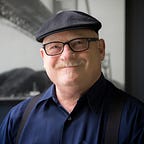The Last Laugh
A Copenhagen architect makes a subtle statement
The Danish National Opera House — opened in 2005—is located on a small island in Copenhagen’s inner harbor. It is one of the most technically advanced in the world. It is also one of the most expensive, costing a cool half a billion dollars.
Situated very strategically, the opera house is sited at the end of what is called the Amalienborg Axis in the very heart of Copenhagen, Denmark’s capital city. The Axis is equivalent to the National Mall in Washington D.C. It is a stone plaza that bisects the Queen’s residential compound, terminating at the Marble Church, the largest in Denmark, and a holy shrine. Directly opposite, and clearly visible across the harbor, sits the Opera House.
The bulk of the money to build it came from the A. P. Møller Foundation, who controls the enormous fortune of the founder of the gigantic Danish shipping company, Maersk. Møller himself has a reputation for being imperious and heavy-handed.
The imposing facade of the very Danish Modern glass and concrete Opera House looms over the harbor. It was designed by the prominent Danish architecture firm, Henning Larsen. Like most established architectural design firms, Henning Larsen is big and conservative, but not that conservative. As the story goes, A.P. Møller arbitrarily overrode some of Henning Larsen’s design decisions, and this did not please the architects. Møller’s ham-fisted meddling with the architect’s design is at the heart of this story of Danish rebellion.
Less than a mile from the Opera House is the autonomous neighborhood of Christiania, encompassed entirely within the city limits of Copenhagen. Formerly an Army barracks, Christiania was abandoned in the late 1960s only to be occupied by hippie squatters in the early 1970s. The authorities never bothered to kick them out and left them to their own devices, so they established their own informal government and rules. It’s home to several successful businesses like the eponymous cargo bicycles that are ubiquitous in bike-loving Copenhagen. Today, the community is home to about 850 people, most of whom are artists, craftsmen, performers, and other creative people who, like their hippie forbears, lean to the left politically.
Christiania, though, is famous for marijuana. For more than 40 years the Copenhagen authorities have turned a blind eye to widespread pot selling and smoking as long as it stayed within the boundaries of the former army base. Christiania residents confine pot sales to one short avenue, often called “Green Street.” Photography on Green Street is strictly forbidden, and brandishing a camera might get you summarily escorted out of town by a dozen offended citizens. Even though Christiania now has its own government, commerce, mayor, and many respectable full time residents, it remains a bold counter-culture statement right in the heart of conservative, Christian, Copenhagen, a living symbol of tolerance and independence. Christiania also proudly flies its own flag, which is orange with three yellow circles in a horizontal line. More than anything else, this iconic flag represents the anti-establishment spirit of Christiania.
The imposing Opera House, on the other hand, is an important civic building representing traditional values and the triumph of global trade and capitalism. But even vastly wealthy, self-important capitalists need to hire creative people, and it is unwise to abuse them, as A.P. Møller learned.
Long after the industrialist Møller forced the unwanted changes on Henning-Larsen’s design, and long after he innocently approved the lighting plan, which included the installation of three gigantic round chandeliers in the auditorium foyer, it gradually dawned on the good citizens of Copenhagen that the Henning-Larsen architectural firm had got the last laugh. At night, after it gets very dark, the entire Opera House glows a certain shade of orange, and the three giant round chandeliers shine a certain shade of yellow, all in a horizontal line with a characteristic spacing, all clearly visible from the Marble Church, the Amalienborg Axis, and the Queen’s Palace. It’s a gentle, subtle, anti-establishment gesture of defiance to those with more dollars than sense.
Heartwarming, isn’t it?
